origami
a complete step-by-step guide to making animals, flowers, planes, boats, and more
Copyright 2012 by Norio Torimoto and Yukiko Duke
All Rights Reserved. No part of this book may be reproduced in any manner without the express written consent of the publisher, except in the case of brief excerpts in critical reviews or articles. All inquiries should be addressed to Skyhorse Publishing, 307 West 36th Street, 11th Floor, New York, NY 10018.
Skyhorse Publishing books may be purchased in bulk at special discounts for sales promotion, corporate gifts, fund-raising, or educational purposes. Special editions can also be created to specifications. For details, contact the Special Sales Department, Skyhorse Publishing, 307 West 36th Street, 11th Floor, New York, NY 10018 or info@skyhorsepublishing.com.
Skyhorse and Skyhorse Publishing are registered trademarks of Skyhorse Publishing, Inc. , a Delaware corporation.
www.skyhorsepublishing.com
10 9 8 7 6 5 4 3 2 1
Library of Congress Cataloging-in-Publication Data is available on file.
ISBN: 978-1-61608-576-6
Translated by Stine Skarpnes Osttveit
Original cover and interior design by Maria Lanner
Cover photo courtesy of Helena Karlsson
Illustrations by Mari Hijer
Wood cut reproductions courtesy of the Nippon Origami Association
Printed in China
origami
a complete step-by-step guide to making animals, flowers, planes, boats, and more
Norio Torimoto & Yukiko Duke

Contents

Foreword
Norio Torimoto first discovered the joy of origami as a little boy in post-war Fukui in western Japan. Norio struggled with poor health as a child and was unable to play outside with the other children. Norio found comfort in folding origami paper, and it wasnt long before he was folding basic shapes with ease.
At eleven, a travelling theater stopped by Norios hometown. After the performances, the children would dawdle for a chance to meet and talk with the actors. When one of the actors folded a crane and pulled its tail to flap its wings, Norio was awestruck. He had never seen anything like it!
Norio was inspired by the complicated design and purchased a book on origami to uncover the performers secret behind the flapping crane. With a racing heart he started folding and to his great surprise, the more complicated model was actually easier to fold than the regular crane, which he had been able to fold for years.
This experience led Norio to one of the origami makers most important realizations: that models may look complicated, but they are usually surprisingly easy to fold. Origami instructions may seem lengthy and contain an overwhelming amount of illustrations, but if you follow them carefully and take it one step at the time, they are rarely difficult.
With a newfound strength Norio began to fold on a serious level. Over time he became one of the worlds nine first origami masters, as recognized by the Japanese Nippon Origami Association. Although he is recognized worldwide for his strength of form, Norio rejected an international career and chose to remain in Sweden.
Since Norio first moved to Sweden at the beginning of the 1970s, hes taught a multitude of Swedes about the art of folding origami. His models have been featured on the cover of the Swedish phone book, as well as National TV. Norio has also adapted origami as a teaching aid to explain mathematical problems at the Royal Institute of Technology in Stockholm, Sweden. Norio believes that origami is mathematics based on logical thinking as opposed to complicated calculationsa math that anyone can master.
Norios dream has always been to help people freely create their own origami.
The main obstacle blocking Norios dream has been that the origami books currently available only provide instruction on how to fold certain models. What they wont show is how to create models of your own. Accordingly, most people believe that origami is essentially about learning to fold a number of traditional models, when in fact, the traditional models are merely a base for self-made creations.
A couple of years ago Norio and myself therefore decided to write a basic origami guide. A book that clearly explains three fundamental steps: how to fold the basic models, how to fold traditional models, and finally how you should approach the creation of your own models. This book provides new insight into the world of origami and its history, for both the beginner and the experienced origami folder.
The book you are now holding in your hands in an entirely unique work. The folding instructions were carefully deconstructed and drawn out by Norio, while I have written the introductions to each section. The origami master also reveals how you can craft models of your very own. Never before has an internationally known origami master so generously shared the secrets of his trade. Through this book one can now truly understand how a master thinks when he creates his origami models.
For this we kindly thank him.
Yukiko Duke
The Authors' Thanks
We want to give a warm thanks to all of the people that have assisted us in this project in various ways. All the good people at our Swedish publishing house Norstedts: Cecilia Kerstell, Helena Lindstedt and Ebba stberg; From the very beginning they all understood what kind of book we wanted to create. Our editor Per Johansson who, with patience and humor, has been a great support to us along the way; Mari Hoijer for professional help with the drawings; Maria Lanner who gave the book its lovely form and Helena Karlsson who took all the beautiful pictures. Many thanks to Charlotte Hermansson for the meticulous review.
We also wish to thank Head Director Koya Ohashi and Yu Sano at Nippon Origami Association, The Japanese Origami Association, for all their help and support. Last but not least, we want to thank our families for being so patient and for enduring our endless discussions and folding sessions.
Norio Torimoto and Yukiko Duke
BEFORE YOU BEGIN
Origami is not difficult. There is no need for specific articles or special knowledge to fold. All you need is a square piece of paper. You can buy origami paper in Asian specialty stores, arts and craft shops, and certain paperies, but these are not at all necessary for success.
As Norio explains, I have folded origami by using anything from the finest washiJapanese paperto dollar bills and pages from the phone book. But do you know what turned out to be the most ideal paper for folding? Regular brown wrapping paper!
Some origami crafters will make cuts in their square piece of paper in advance in order to create their models. But Norio Torimoto believes that the challenge lies in exploring all the possibilities of the squared piece of paper. Therefore, he only uses scissors in one traditional origami model of this book.
Although some models require more steps to complete than others, none of these models are difficult to complete!
Symbols
In order to make the instructions easier to read, Norios drawings are accompanied by symbols. Learn to recognize the meaning of these symbols and the folding will become even easier!
The symbols also open the door to the global world of origami. Since most of the symbols are internationally known you can easily fold using Korean or Polish instructions without mastering the language, as long as you know what the symbols mean.


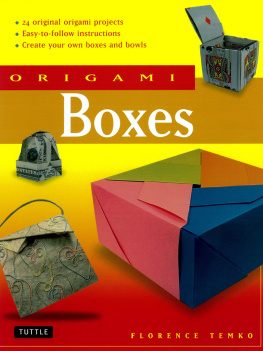


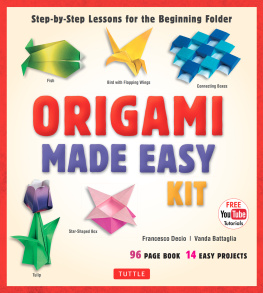

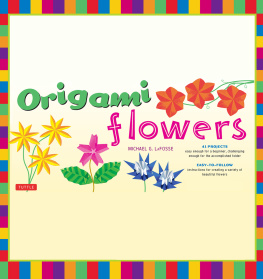
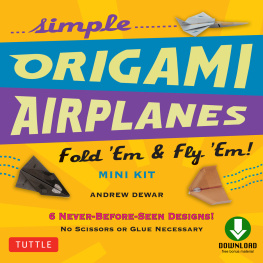
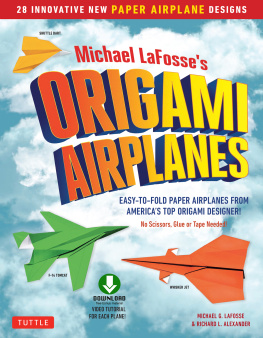

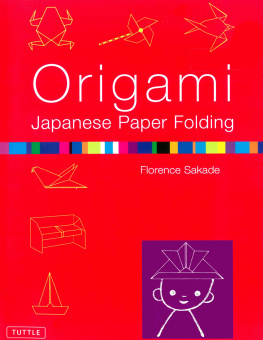
![Marcia Joy Miller - Origami for Busy People: 27 Original On-The-Go Projects [Origami Book, 48 Papers, 27 Projects]](/uploads/posts/book/151502/thumbs/marcia-joy-miller-origami-for-busy-people-27.jpg)


